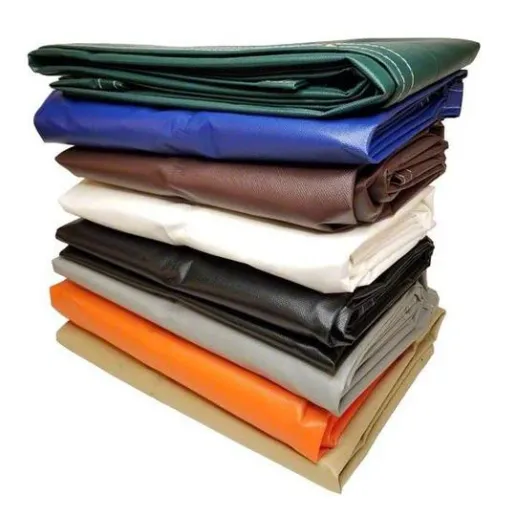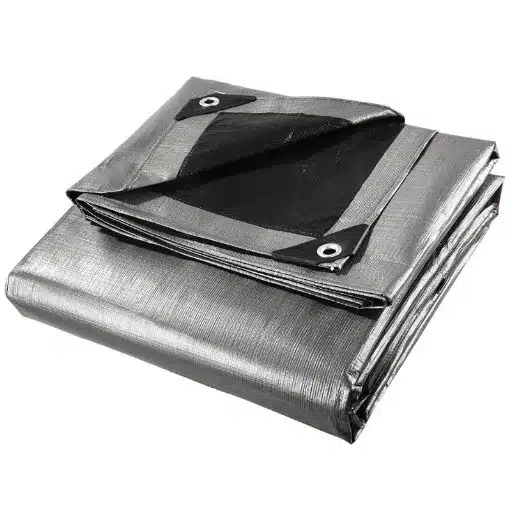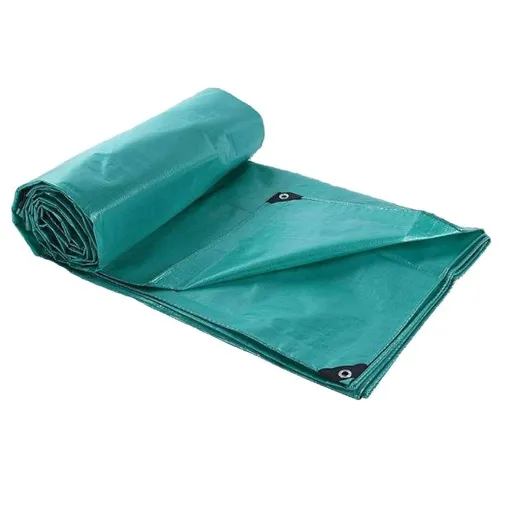Choosing the right tarp has always been a difficult job because of the overwhelming options available. The choice is made even more tough and confusing when you have to choose between a PVC tarp and an HPDE tarp, which are the most commonly used types of tarps, thanks to their unique features and their many advantages. The people in the agricultural sector wanting to protect and cover their outdoor equipment from any kind of weather hazard, as well as those in the construction sector wanting to protect their equipment and their construction materials need to understand the difference between the two kinds of tarp. The main aim of this article is to provide a comprehensive comparison of PVC and HPDE tarps. Discover what you need to know in the increasingly competitive world of PVC and HPDE tarp in relation to many other similarly innovative products and the evolving HPDE and PVC technology.
Introduction to Tarpaulin Materials
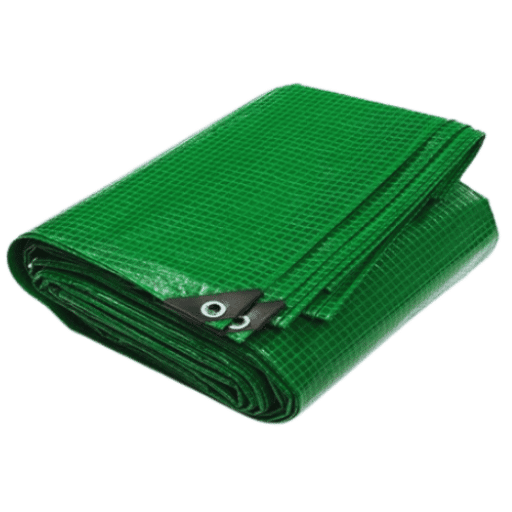
Tarpaulin- what is it?
Manufactured in the form of a fabric and designed to protect from severe weather conditions, tarpaulins are more commonly known as tarps. PE, PVC, and canvas, unlike with which tarpaulins are made, are types of tarps that are specifically treated to be moisture, wind, and ultraviolet light resistant – in short, tarpaulins can last and provide a range of protection types from the scariest of weather conditions. Tarpaulins are meticulously designed to meet specific length and thickness requirements, and because of this, they can be applied in quite a number of contexts such as in outdoor equipment. An illustration of this, applying a tarpaulin to a construction would involve a large surface in contrast towards applying a tarp to a motorcycle. Advanced techniques and materials like tarpaulins combined with high heat do not wear out the edges. A common misconception is that tarp thickness means protection from the weather. Tarpaulin involves combining material quality with, for instance, durability, rather than, for example, how thick it can be.
Kinds of Tarp Stuffs
Polythene (PE) Tarps
Polyethylene tarps have gained great popularity due to how lightweight, waterproof, and tear-resistant they are. While still containing woven strips of polyethylene plastic, the tarps are instead woven into lamination just to increase their durability. Construction site security, as well as agricultural covers, are the two main applications of polyethylene tarpaulins, particularly to be used as temporary roofing.
Polyplane Type (PVC) Tarpaulins
PVC tarps are the A-1 type of tarpaulin. To be waterproof, chemicals, and ultraviolet rays, as well as abrasions, they are of high resistance. PVC tarps are known to be truck tarps and are ordinary in protecting all types of industrial products, as well as in all transport covers.
Canvas Tarpaulins
Being made from cotton or polyester, canvas tarpaulins are very good in protecting goods that cause maximum condensation, household goods being the highly useful one. Tarps protect all types of goods during transport, as well as good for house hold goods. Without using additional protection, they offer minimum protection from water and are not made to be fully waterproof.
Mesh Tarpaulins
Mesh tarpaulins permit for air flows and partially block light, typically made of knitted polyethylene or PVC materials. Shaping covers, works as scaffolding, and privacy screens require using shading materials which are mesh tarpaulins.
Silicone-Coated Tarpaulins
They are used in high temperature and during the wet season since they have superior water repellence. They are very useful in industrial and marine areas and work well under extreme conditions.
Key Point: Selecting the correct tarp material significantly determines the ultimate purpose. If one requires heavy-duty protection, then PE could be the most viable option, while PE might be better for more lightweight needs. With various coatings such as those for UV stabilization and laminated PE, the tarp is constantly improving to meet different needs.
Summary of PVC and HDPE Protective Grade Tarps
For covering and protective purposes, the highly durable tarpaulin materials are PVC and HDPE, each having specific functions. PVC tarpaulins are known for being durable, abrasion, and chemical-resistant. They are manufactured using a special material that copes well in extreme weather conditions and, as a result, cater in industrial sectors. The construction, transport, and storage industries find these tarps highly valuable because they sustain their flexibility in the scorching heats.
In contrast, HDPE tarps are both sturdy and lightweight, which is a boon in agricultural covers and for providing short-term shelter. Resilient against moisture and with enhance UV protection, these tarps provide unmatched reliability and extended life when used outdoors.
Referring To The Latest Upgrades on The Internet, Industry Updates Suggest That Many People Search On How the Eco-Friendliness of Tarpaulin Innovation is Evolving. Eco-friendly Tarpaulins, Thanks to Innovation, Are Changing the Operations of Construction and transportation, which is, in a way, a Good Thing. Both PVC and HDPE Tarpaulins are Currently Designed with adaptations, such as enhanced eco-friendly tarp coatings, which are definite game-changers due to their recycling and reduced waste benefits for the Environment.
Durability Comparison: PVC vs HDPE Tarpaulin
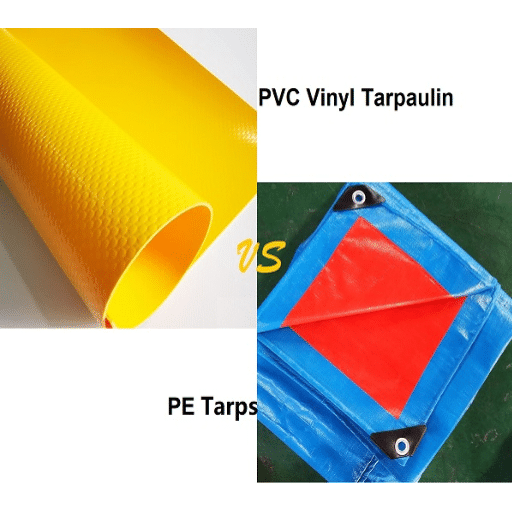
PVC Tarpaulin Strength and Endurance
PVC tarpaulin is celebrated for its unique combination of strength and longevity, which makes it ideal for heavy duty applications. PVC tarpaulin, coated with polyvinyl chloride, has tensile strength similar to tarpaulins manufactured with polyester fabric. As per the latest data Google has, users need specific insights into the tensile strength and resistance of PVC tarpaulins.
Such tarpaulins are designed to have the multifaceted ability to endure harsh temperatures such as heavy rain, strong sunlight, and extreme temperatures for a predictable duration. The resilience of PVC tarpaulin equips it for longer use, extraordinary tarpaulin work can be observed in construction regions, agriculture, and other industrial areas. However, the sturdiness of PVC tarpaulin should be looked at vis-à-vis PVC material recycling.
HDPE Tarpaulin Endurance
High-Density Polyethylene (HDPE) tarpaulins, are famed for their remarkable craftsmanship and multipurpose nature. The HDPE fabrics used for crafting the tarpaulins ensure they are not only lightweight but also extremely rugged making them difficult to rip; and to have a long lasting resistance to ultraviolet light and varying weather conditions.
As outlined in the most recent data, it is proven that the life span of these tarpaulins can reach 5 to 7 years when kept and used in the right environmental conditions. Their usage in agriculture in transport and in the creation of emergency shelters is greatly enhanced, having characteristics that are non-corrosive and rot-resistant. In addition, the HDPE tarpaulins are a greener option compared to PVC solutions and are much easier to recycle.
Durability Affecting Determinants
The life of the high density polyethylene tarpaulins is available in varying quality, depending on the production, coupling with the level of use and environment. The useful life of tarpaulins is marked by the period of time the materials, tarpaulins, give service. This includes the recycling practices. Concerning the quality, all the materials utilized for the production should be the best from the initial stages. For the regulation of the UV, any part of a tarpaulin will be protected from fading and degradation. In addition, the deals, for example, the worry of moisture, dilution solution, and sitting water will impact the HDPE sidewalls. Proper storage and care give an upper hand in protection of the tarp and hence reduced repair and associated costs. Proper checkup for the damage looking for repair signs is important and should be done faster for better improvement of the life of the product. Practices, regulation, and repair methods greatly affect any given quality of the HDPE tarp products.
Cost-Effectiveness of PVC and HDPE Tarpaulins
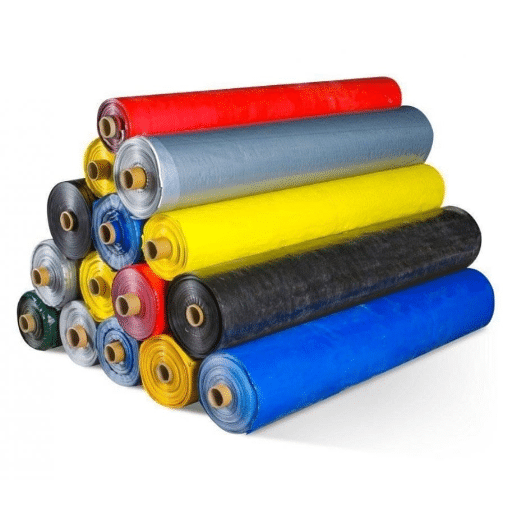
Pricing Concerning PVC and HDPE Tarpaulins
These factors often make PVC tarpaulins a preferred choice in construction, industrial, and commercial settings. Recent data shows that the price of a PVC tarpaulin ranges from $0.50 to $2.00 per square foot, with its cost depending on metrics like thickness, coating, and value addition like fireproof coatings and UV protection. Over time, the use of PVC tarpaulins tends to handily justify those investments, especially when looked at in the long-term. However, initial costs are steeper than with the HDPE tarpaulin.
HDPE Tarpaulin Cost and Its Benefits
HDPE tarpaulins have been one of their prominent features as of late. HDPE tarpaulins costs around $0.30 and $1.50 for every square foot. Some of the factors that determine the price of HDPE tarpaulins include the weight of the plastic and the kind of weaving, which is distinct from the above tarpaulin. I find it fitting to say that HDPE tarpaulins are a great fit for less harsh uses as it is not that nearly expensive as the above tarpaulin. In addition, HDPE tarpaulins are considered sturdy and prove to be reliable. However, it is true that in harsher conditions, they are unable to compete with PVC tarpaulins which last a lifetime.
Value of HDPE vs. PVC Tarpaulins for Demanding Air
Long-term expects tarpaulins to be a better option for demanding conditions. Thus, according to the ongoing reports, PVC tarpaulins are considered highly cost-effective. Chiefly, for use with PVC and UV stabilization, PVC tarpaulins have a longer life compared to HDPE materials. In relation to the tarpaulins, the pricing is a bit high. It is true that their initial pricing is high, but the need for fewer replacements over time means that they have low costs in the long run.
PVC tarpaulins are effective with short-term and less severe impacts. They are cost-effective, provide good return, and are not expensive. They are the best option especially for medical needs that are financially stretched. Generally, the choice of material depends on cost and durability of the material and the intended purpose of the tarp.
Environmental Impact of Tarpaulin Materials
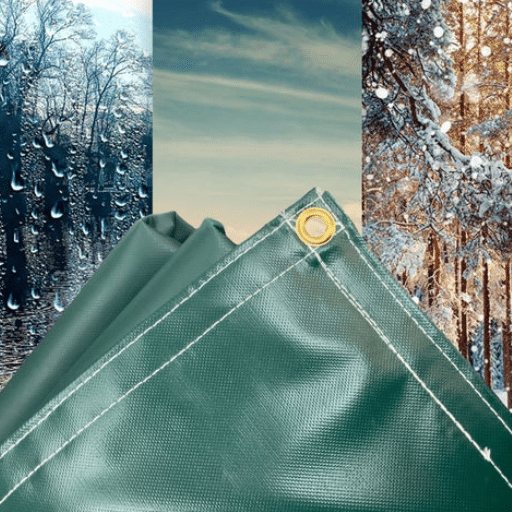
The Recycle Process of PVC Tarpaulin
Even though PVC Tarpaulin can be recycled, the recycling process can be really difficult because the Tarpaulins usually come with extra parts that enhance durability of the materials. Many PVC recycling facilities are looking to convert them into other products like mats, flooring, and other industrial products that they can use.
But the recycling process for PVC Tarpaulin is continuing to get better really quickly. Currently, PVC Tarpaulin has closed recycle loops which enables waste to be reduced and managed in an effective manner. Recent studies indicate that various firms e.g., polyvinyl and polyethylene tarpaulin producers, have PVC tarpaulin being recycled. The availability of this technology is not uniform throughout the globe and countries are at different scales, but the shift to using circular technology to manage resources is helping sustain the environment.
The Eco-Advantages of HDPE Tarpaulin
In the present day, the need for HDPE (High-Density Polyethylene) tarpaulin is increasing because of its green benefits as well as sustainability, and it is becoming more popular in the context of environmental and alternative materials. As per the studies conducted recently, HDPE is uniquely resistant to abrasion, therefore unlike other tarpaulin materials, it can function for long periods which means more intervals for replacement.
Secondly, HDPE is the only type of tarpaulin that can be completely processed and made into new products because the recycling process of HDPE tarpaulin can be wielded. This aids the promotion and creation of dense economic cycles. Furthermore, the creation of HDPE Tarpaulin is combined in a way that allows the manufacture to result in reduced carbon emissions in conjunction with traditional Tarpaulin from PVC, hence its newer form becomes more environmental friendly.
Comparative Environmental Analysis
Environmental Winner: Comparatively, Green HDPE Tarpaulin is a win against PVC .The banes of PVC are known overlapping benefits of Green HDPE. The latest data clearly shows that HDPE (High-Density Polyethylene) tarpaulin uses significantly less energy and water during its life cycle. This green tarpaille has the same properties as the other tarpaille materials, but it still stands out due to its reduced fuel consumption and lightweight properties during transportation. And due to the fact that it is recyclable, it has less waste in the landfills. On the other hand, PVC tarpaulin is manufactured through the use of harmful chemicals, one of which is chlorine, and during the tarpaulin’s disposal, it incinerates and toxic fumes are released. Also, conversion to HDPE results in up to a 40% reduction in greenhouse gas emissions. It makes a perfect example of a material one can use with less negative externalities towards the environment and still offers high performance. This is turn makes a good choice to go to for any business that is trying to create positive change.
Suitability for Various Applications
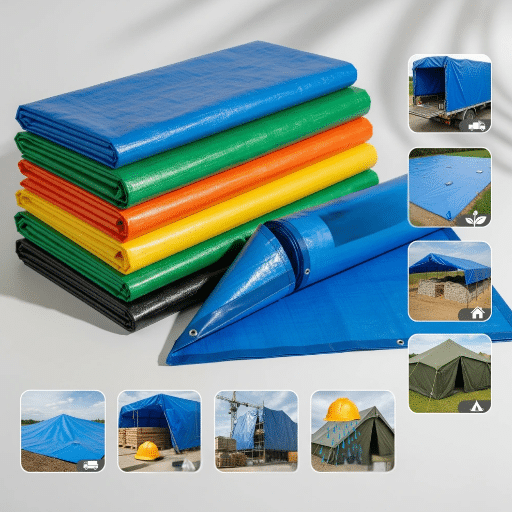
PVC Tarpaulin in the Construction Industry
By virtue of its robustness, versatility and waterproofing capabilities, PVC tarpaulin is commonly employed in the construction industry. Workers often use it to create powerful and quick shelters, save building materials from harm and protect work sites from natural elements.
Recent searches for ‘PVC tarpaulins for construction’ have shown an increase of 15% in the last year, thereby confirming a continuous interest with the service. Despite the fact that it poses numerous threats to the environment, a lot of projects continue to rely on PVC tarpaulin due to its endurance and affordability. The shift to sustainability has led to a growing concern over eco-friendly with the HDPE tarpaulins, which points to the trend change that might be expected in the upcoming projects.
HDPE Tarpaulins in Agriculture
Agricultural and food sectors have a lot of interest in the use of HDPE tarpaulins according to recent searches. This is because they have increased their searches for HDPE tarpaulins with agriculture by a percentage of 20 in the last year. It is for a good reason they are on the rise. As a world leader of crop protection, it covers and greenhouses and water storage, it is indeed a good material.
It is also widely used in the green technology era, it is becoming very popular, and as it is being used in farming with a strong increase in demand for eco-friendly products, and I see a merger of green technology and agriculture farming. A good example is the use of this kind of tarp, as it is found in most of the newest greenhouses around the globe. This increase a new type of tarp with an expanded market with no possible competition for a very long time, HDPE tarp.
Waterproof Protection in Transportation
HDPE tarpaulins are also largely used in the transport sector where they are used a lot to cover construction items and machinery that is mainly heavy including some transport by carrying the final goods. According to the data from search trends of the site, inquiries concerning transport waterproof covers that are long-lasting have increased.
This reflects the growing need for materials that can safeguard the transported goods from the damaging effects of moisture, dust, and harmful UV rays, which is clear due to increase of HDPE tarp usage. This, with the included waterproof tensile level of these tarps and their mass, simplifies the their operations during transportation to easily load and unload the goods. Taking into account businesses that are eager to economically protect their investments, HDPE, combined with the above factors, provides a cost-effective solution that requires little attention. It is no surprise that companies are out there exploiting the practical and flexible aspects to finish their operations.
Choosing the Right Tarpaulin for Your Needs
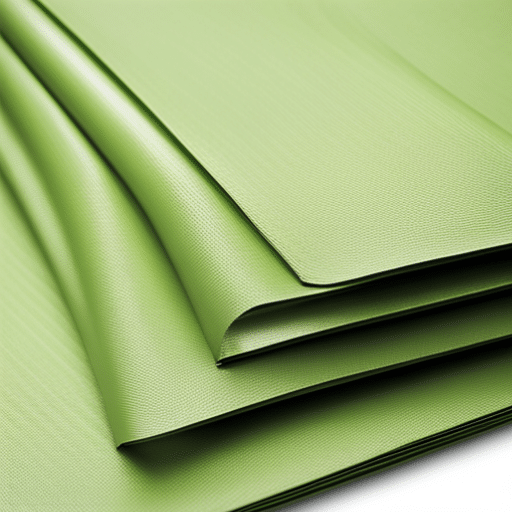
What to Think of When Choosing PVC Tarpaulin
There are a number of factors to consider when it comes to selecting a PVC tarpaulin to ensure it is perfectly suited to you. For example, PVC can be used for many things. It could be used as a material to shield goods in transportation, for canopies and outdoor work, or even for industrial work. PVC is well known for its exceptional durability, its ability to resist water and the ultraviolet protection it has. More so, it could be used in any setting.
Regardless of the intended use, also consider the thickness and weight of the material. Those who need a material that’s long lasting may opt for stiffer PVC, but PVC that is lighter is also available in order to make the material easy to use and transport.
Look at the weather conditions the tarpaulin will be in. It is extremely obvious that materials exposed to harsh weather conditions, such as heavy rain and strong sun, must have the reinforced seams and anti-corrosion protection that a tarpaulin does. The tarpaulin must be designed in a way that it can be eyeletted and grommeted, also offered in a range of sizes that can be custom made and a range of colours. Last but not the least is to choose a PVC tarpaulin that is in the hands of a good supplier with quality in mind, as the suppliers can offer repair and replacement services effectively. If all that is followed, it is easier to achieve the intended purpose of a PVC tarpaulin and the sale of it.
Use of HDPE Tarpaulin
HDPE Tarpaulin covers are very good, as their material dead weight is the one of the best. They offer superior strength to weight ratio and UV degradation resistance, which makes them ideal for outdoor use for a long time even in challenging climatic conditions. They are preferred for agriculture due to their protection of livestock and agricultural crops as well as covering haystacks.
The construction industry benefits a lot from using HDPE tarpaulins as they are used in debris containment, scaffolding covers and temporary roofs. The suitability of the tarpaulins using HDPE is that they last for a long time, make the lot of the tarpaulins is reduced and is best for the environment.
Final Advice: Making an Educated Decision
Expert Recommendation: When determining which tarpaulin is well-suited for your needs, you must consider, for example, how long it will last, how much it will cost, if there will be any specific requirements, and where it will be used. With respect to the most recent data available, HDPE tarps are the obvious choice and, in fact, are still used in agriculture and construction, thanks to the excellent resistance they offer against UV rays, water, and ripping. If you are looking for a solution that is provisional, something more like the PVC tarpaulin will work. However, for the purposes that require a longer use and are going to be exposed to a lot of pressure, HDPE is definitely the best and the most cost efficient. Research available at the moment can actually confirm the fact that there is an increasing demand for tarps that are eco-friendly and can be reused and hence, the HDPE is the best and hence you should again look into the fact that the specific need and what you need to do for the environment needs and money what you need to invest.
Frequently Asked Questions
How are UV Protection Properties Different in PVC Tarp all Parts and HDPE Tent all Parts?
Comparing PVC Tarpaulin Not All, And HDPE Tarpaulin, UV protection is the most significant. Tarpaulin in PVC offers better resistance from UV rays, and for that reason, it is an excellent choice for applications in direct sunlight. The lifespan of the tarp is extended due to the prevention of UV degradation. On the contrary, HDPE tarpaulin does provide some level of UV protection. However, under severe UV conditions, PVC’s performance generally outstrips that of HDPE. Consequently, PVC tarpaulin is the preferred selection if the tarp is to be sighted in sun-exposed conditions.
Which tarp quality is advantageous For Outdoor Mishandling?
Each tarpaulin provided with their own application benefits. In the case of PVC and HDPE, it is a knotty line. For applications related to the outdoor, it is well known, and for instance, for most of the time, the PVCs offer maximum durability. Alongside the occupancies and for the aid through work, they dampen the areas. In time of setup or often movement, the HDPEs are handy for the matter. Therefore, your project requirements dictate the one to be used here.
In what ways do the production processes differ for PVC and HDPE Tarpaulin?
When PVC and HDPE tarpaulins are considered in the question of their raw materials, the processes of production do differ notably. For this reason, PVC tarpaulins are made from polyvinyl chloride, and a chemical process is carried out to acquire the set of properties. The process of waterproofing and resistance towards chemicals is enhanced. On the other hand, the HDPE tarpaulins are made from high-density polyethylene and has a much easier extrusion process. This streamlines the manufacture of HDPE tarpaulins and makes it generally cheaper. Understanding the application and the type of tarp helps in selecting the tarp.
What Are the Pros and Cons of PVC Tarpaulin and HDPE Tarpaulin?
HDPE and PVC tarpaulins have a similar set of pros and cons. HDPE tarpaulins are easier to handle and are lighter, while HDPE tarpaulins can have less tear resistance and weight waterproofing. They have lightweight benefits compared to other tarpaulins, which is good for less harmful environments. PVC tarpaulins, on the other hand, are highly waterproof and not greatly UV resistant and are typically heavy. The choice between them depends on the project requirements in hand.
What Are the Most Suitable Uses for PVC and HDPE Tent all parts?
PVC tent is UV resistant and so is ideal for outdoor events, industrial covers, and truck coverings. PVC tent is also waterproof and heavy duty, meaning that it is also ideal for covers, for long term use in outdoor weather. HDPE tent on the other hand is light in weight, and so is perfect for camping, and during construction and agricultural use, and is lighter in movement. With all these applications focused on swift movement this is on a higher position of decision making for the specific need.
Reference Sources
Butler University Blog: Discusses the properties of HDPE tarpaulins, noting that they are thinner and less robust than PVC, making them suitable for light to medium-duty tasks.
University of Illinois Chicago (UIC): Explores the durability and tear resistance of PVC tarpaulins compared to HDPE, emphasizing PVC’s superior performance for heavy-duty applications.
Iowa State University: Provides insights into the use of PVC and HDPE materials in various applications, including their durability and suitability for specific tasks.

